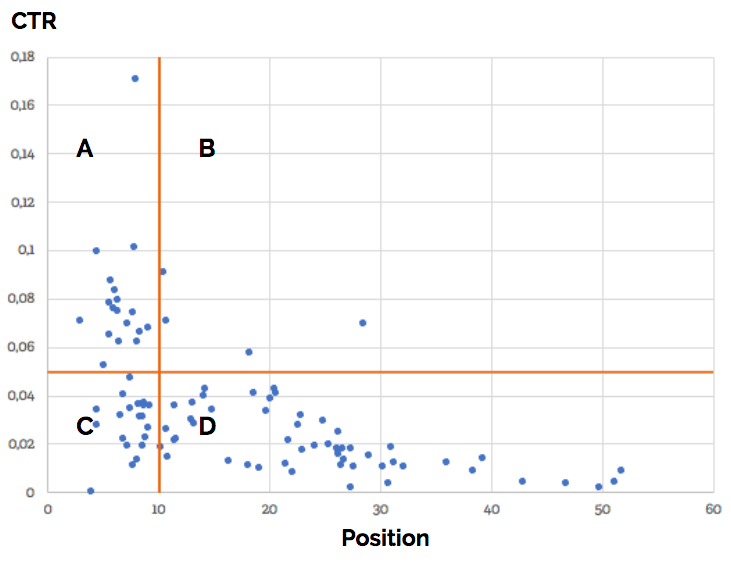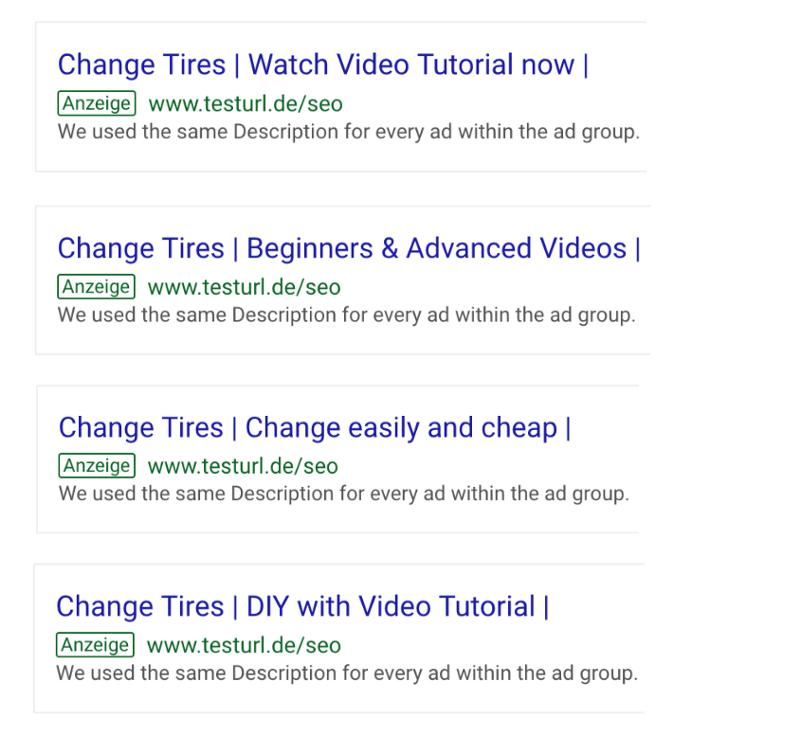By Michelle Gerstberger and Inna Leitner
By combining SEA data with SEO we improved CTRs for SEO content pages up to 26% while also generating additional SEA revenues.
This was only a small test trial but this is proof enough that there is a lot more untapped potential.
The General Problem
Since Google is encrypting searches, SEOs are left with no information about what people search for before clicking on a page — except when they click on ads.
SEOs are flying blindly without any information which keywords actually drive revenue and conversions. Additionally, we are also not sure how to properly address the user’s search intent if it is not clear what exactly he was searching for.
In order to regain this huge chunk of missing data SEO and SEA have to work together. This way we can get a head start our competitors might not have.
At the beginning of this year, I was able to run a test for one of our ventures, combining SEA and SEO data with the help of my former colleague and senior SEA Manager Inna Leitner.
The results of this test were surprising and exceeded our expectations, thus leading us to promote this cross-channel work a lot more with all our ventures.
Background Information
I have been strongly inspired by Wil Reynolds’ approach to combine PPC and SEO data. His approach is to have SEA ads run on clients’ SEO pages for one month before starting to optimize anything in SEO.
In general Adwords data is used to improve the conversion through finding out:
- The converting keywords
- The customer’s search intent
For one venture, for example, we saw that the customers search a lot more specific than we expected. We understood that our landing pages do not serve the search intent and we, therefore, created several new specific landing pages that convert a lot better than the general pages.
The Test
My project with one of our e-commerce ventures involved the potential analysis of the online magazine. The company never had any SEA ads running on the content as the magazine only featured long tail SEO content. So we did not have any of the interesting data.
Convincing the venture to have ads running on the entire magazine for one month was not really possible — also considering that the magazine is not the most important part of their website. Especially without knowing the exact costs or having a precedent that showcases the improvements we could generate.
Therefore I decided to pitch a small use case to test this on a very small scale and to show that we can improve SEO by using SEA.
I visualized the performance of all magazine articles by clustering them according to their CTR and ranking position.

A — top performer pages with best rankings and best CTR
B — great CTR but bad ranking
C — good rankings but a bad CTR
D — bad rankings and a bad conversion rate
In the second step I added a third metric — the amounts of conversions every article generated.

The goal of this test was to run SEA ads on five articles with a bad CTR but good rankings and a high amount of conversions.
Instead of searching for the converting keywords we tested different SEO titles in the ads to see which ones generate the highest CTR.
This Is How We Set Up the Test:
A dedicated Google Ads (former Adwords) campaign was created consisting of five ad groups, each dedicated to one of the five landing pages.
Each ad group contained one focus SEO keyword and four Ad variations.
Each Ad variation had one variable that was changed — Headline 2.
Campaign: SEO_Test_Headlines
Ad groups (each containing one main SEO longtail keyword)
Ad group 1 — change_tires
Ad group 2 — style_office
Ad group 3 — feed_puppy
Ad group 4 — play_piano
Ad group 5 — repair_suitcase
Ad group 1 — change_ tire

We kept the main SEO keyword in the headline 1 and description unchanged for all ad variations. The goal of the test was to find out which one of the four call to actions (expressed in headline 2) would have the highest CTR.
Ad rotation was set to “rotate indefinitely” to achieve equal traffic proportion for each ad variation within each ad group.
KPI to test: CTR
Statistics to collect: Clicks and Impressions
Confidence level: 95%
Every week we reviewed the performance of the headlines by testing if there had been any significance between the headline performance.
We used the A/B Testing Statistically Significant Calculator for that, entering the clicks and impressions.
After a significant ad variation “loser” had been identified all ad variations were paused. A new ad group was created only featuring the “winner” ad variations. It was not enough to simply pause the “loser” ad variation and continue the test, as the results would have been disturbed by the data each of the “winners” collected in the previous test round.
In order to get one clear “winner” per ad group we had to run three test rounds.
In the beginning it took us up to five weeks to get the first significant result for the titles, as there was not that much traffic on the long tail keywords and the daily budget for the test campaign was small.
But over time the process sped up a bit the less headlines we had to test.
So finally after 10,5 weeks we were done. We implemented the winning ad as a SEO title and watched what happened.
The Result
Overall we had a cost-turnover ratio in SEA of 58%, which we never expected to happen. We were actually expecting a loss of money. So this was a huge signal that using ads on strictly SEO pages like a magazine can definitely make sense and bring huge insights for SEO we would otherwise never have.
And for the actual goal of improving the headlines: we achieved up to 26% CTR improvement for the most important keywords and a general CTR improvement for all queries of 1% on average.
All of this improvement was achieved without having risked SEO rankings by changing titles to often.
The Future
We want to focus more on getting SEA data from SEO pages before optimizing anything so we can identify the converting keywords instead of focussing only on search volume.
And using this small test case with a very insightful outcome plus having established a deeper knowledge and understanding between SEA and SEO channels we want to continue combining forces to achieve results that are over the moon.